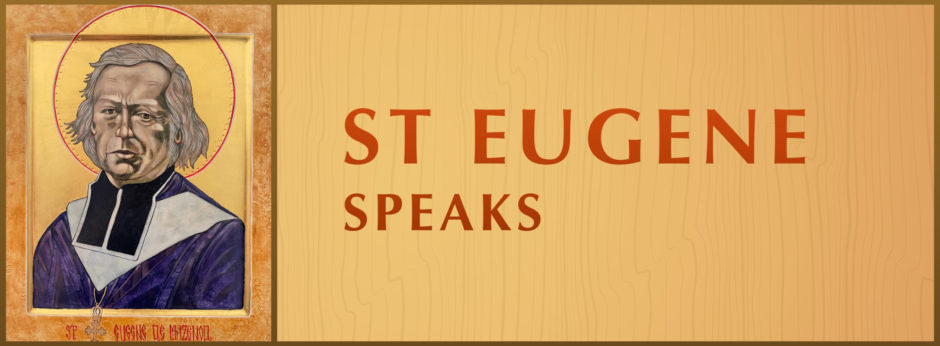Eugene shares his reactions to the beauty of the Basilica of St Mary Major, and the activities that took place in it.
Returning to my monastery, I couldn’t resist the impulse of going into the basilica of Saint Mary Major again. I roamed through it for half an hour without dwelling on any particular object precisely. I enjoyed the beauty of this building
and, as I was going about, I was greatly edified by the great number of zealous pilgrims crowded around the penitential tribunals where the Dominican Fathers, seated in those spacious confessionals, listened charitably to them, and from time to time, extended the long cane fixed in front of them, like a pavilion standard, to touch the head or shoulders of those who knelt before them for this very purpose.
The entire sight both edified and touched me. I stopped to ponder it for some time. It was noon. All these good people had been fasting till then, since they were going to devoutly receive Holy Communion to gain the jubilee indulgence after they left the confessional.
Roman Diary, 30 November 1825, EO XVII
Two days later we find him drawn to the same place again:
While passing once again in front of Saint Mary Major, I entered it for the fourth time and stayed there more than an hour. I will not attempt to describe all that a person sees in these large basilicas which would be too long and incomplete…
It is impossible to go into detail about the beauty of the main altar and the two large side chapels. I have never seen such beautiful marble forms as those which adorn the Blessed Virgin’s chapel; the eye could never have its fill of them.
Roman Diary, 2 December 1825, EO XVII
“Never lose an opportunity of seeing anything beautiful, for beauty is God’s handwriting.” Ralph Waldo Emerson

Isn’t it wonderful how we are drawn, called towards that which feeds us.
I sat here this morning thinking of the large churches and cathedrals that I have visited and like Eugene have felt amazed and wondrous at the sheer beauty of the building, the statutes and paintings, the ornate and the simple. There is a particular quiet and peace to be found in these beautiful expressions of man’s desire to build a house fit for God and which will hold all those who come to worship Him. There is a natural invitation to sit in the small uncomfortable straight-backed pews and to just be, to take in the smell of candles, the hushed whispers of others and to allow one’s self to be transported through the beauty and spendor into the very arms of God himself. These cathedrals can be like an oasis in the desert of the city’s noise and business.
I am not familiar with the practice of the using of canes to touch a penitent’s head or shoulders – in truth I am unable to form an image in my mind without a smile and a small giggle escaping as my mind moves from the sublime to something almost comical. And yet it was something that caused Eugene to take notice and to savor. I know what it is like to enter a large church for daily Mass and to see the people lined up down the side aisle, each waiting their turn to go to Confession. It is at once a somehow known and comforting sight as well as one that is humbling. I find myself amazed that people would wait and fast for such an extended period of time in order to receive Communion and am thankful that it is not so today.
I understand a little of how Eugene would enjoy the opportunity to step out for a bit from his tour and discovery of Rome to just be. Even thinking back to my experiences of being able to admire such occasions of the beauty of God, to read the handwriting of God fills me with gratitude. I think of my times there in some magnificent churches and even more of them in my smaller parish church. It is like a small experience of yesterday’s gospel, a small experience of the forgiveness and love of the Father.